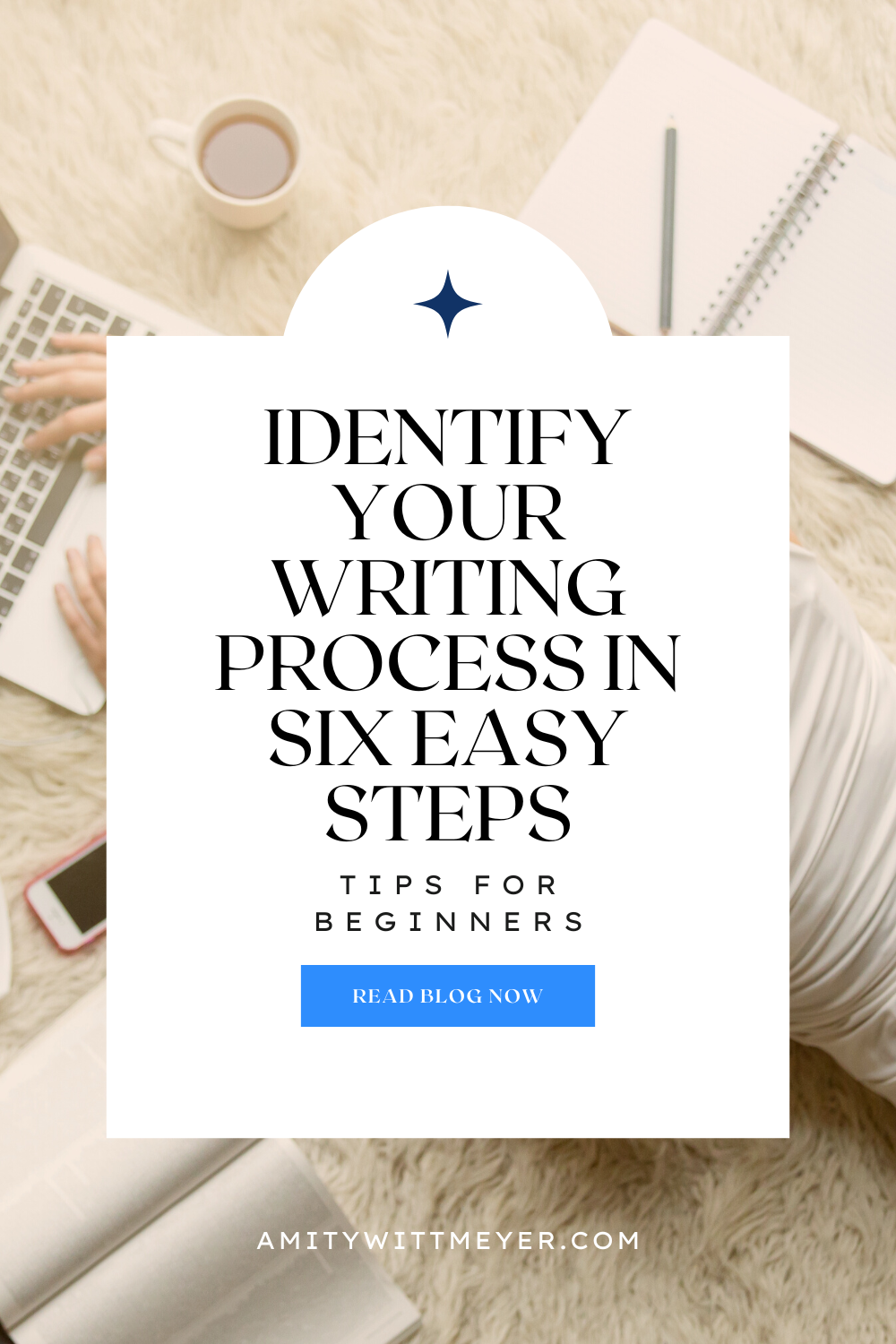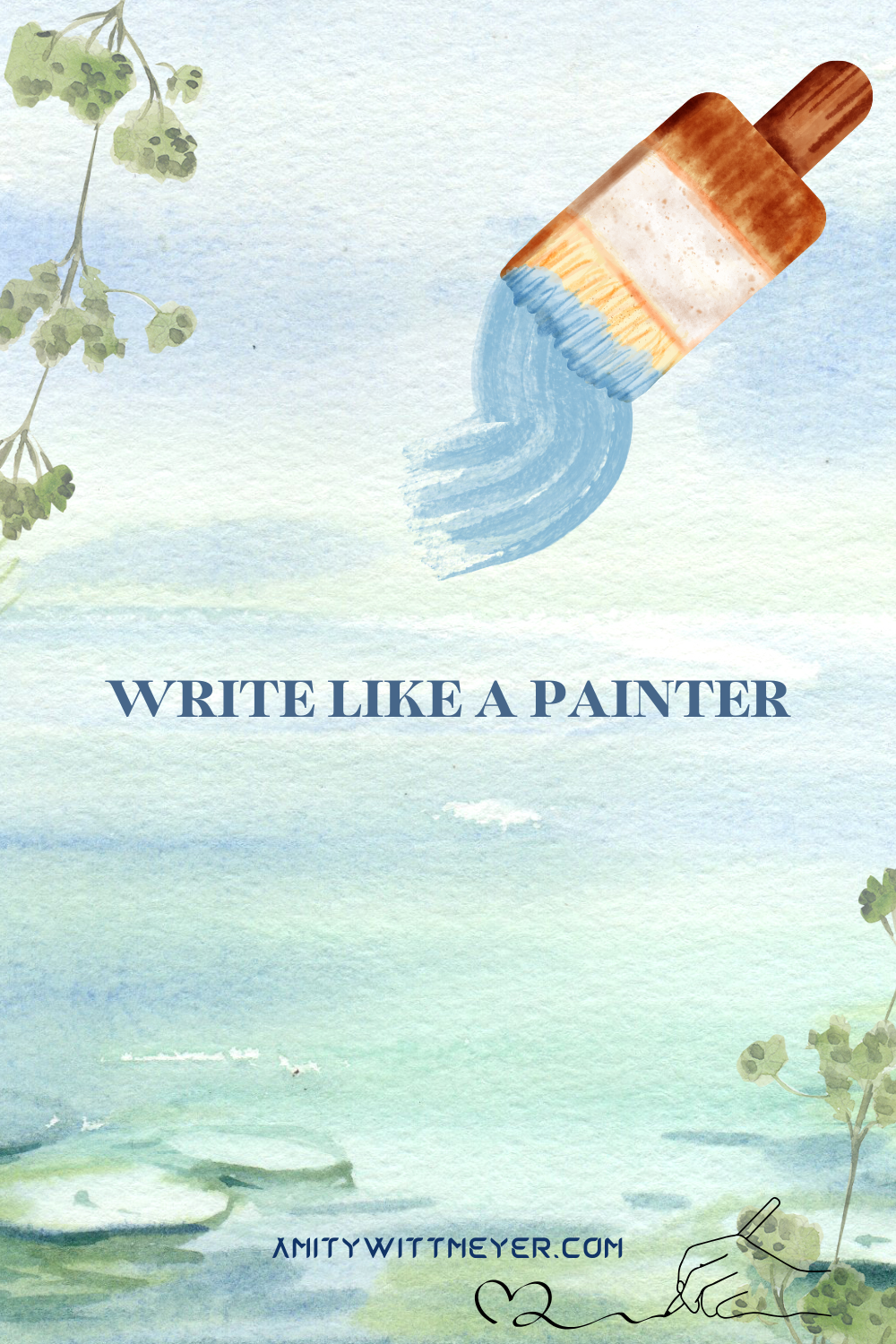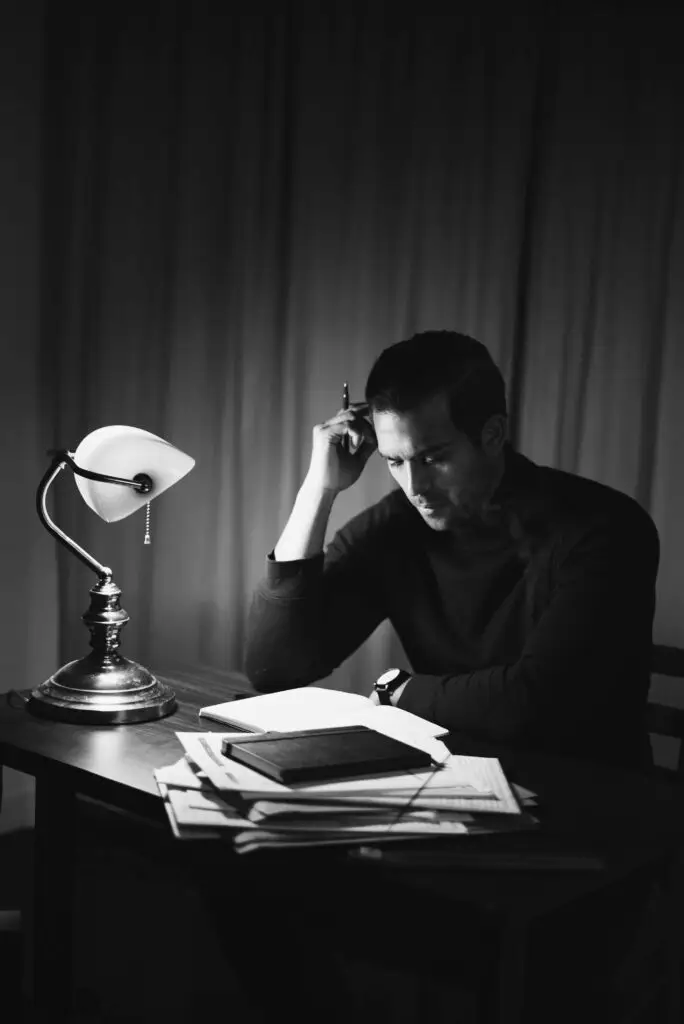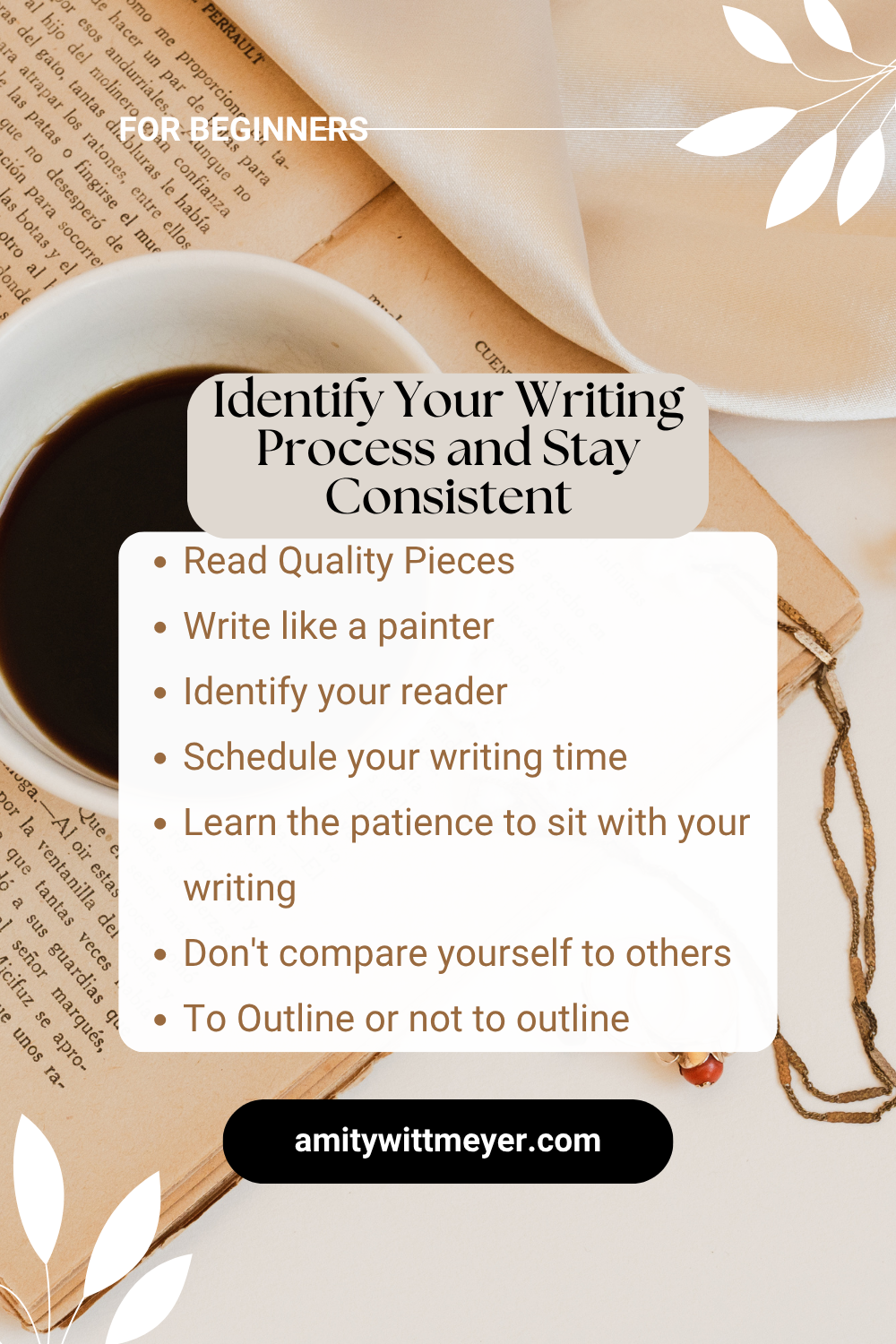Intro
Identify your writing process through six easy steps to improve your work ethic and find your flow. By the end of this blog post, you’ll be better equipped to find a system that works for you, allowing you to stay consistent and enjoy the process.
Are you a writer who starts a piece of writing you were really excited about, just to lose motivation to finish it later? You come back after some time just to realize you have a great start, but you never found out how far you could take it.
So many good writers lose motivation and never have their skills grow to fruition solely because they didn’t create the correct habits to remain true to their goals.
Let’s fix this procrastination cycle now!
1. Read Quality Pieces
To begin, reading more will always be vital if you wish to be a writer. Not only do you expose yourself to learn more about the different areas of the world, people from different walks of life, but also various writing styles. It is not just common for writers to draw inspiration from other writers, but it is crucial.
In the article “Become a Better Writer by Reading: 5 Ways Reading Improves Writing” by Masterclass, they report,
“You must read books both for pleasure and with the mindset that you’re investing in your own writing craft.”
Your job is to become a better reader. What do I mean by that? If you want to write quality pieces, you need to read quality pieces. If you are trying to grow your vocabulary, turns of phrases, and symbolism, yet you are still reading middle school level writing, you will not be able to produce anything much better.
Think of some modern classics right now. If you’re reading award-winning writers, you will start to see similar themes, concepts, and nods to other writers from the past. When a writer nods to another text, this is called allusion and adds deeper meaning to their work.
Here are some examples:
- East of Eden by John Steinbeck explores the same themes of sin and sibling rivalry as the biblical story of Cain and Abel. The title itself is a nod to the famous creation story in Genesis, as well.
- Frankenstein by Mary Shelly has the subtitle: The Modern Prometheus, clearly alluding to the Greek myth about Prometheus being punished for giving the gift of fire to humanity. Similarly, Dr. Frankenstein spends the rest of the novel tortured by his creature and the destruction he causes.
- Ulysses by James Joyce is clearly a nod to The Odyssey, the famous hero’s journey by Homer. However, Joyce set his story following a common Irish man going about his day to finally meet his wife, whom he knew to be cheating on him.
- How about Blood Meridian by Cormac McCarthy? The story directly nods to Melville’s Moby-Dick, an epic narrative that was inspired by the works of Shakespeare. Not only is the dialogue extremely Shakespearean, but the descriptive paragraphs are just as poetic. Captain Ahab is a nod to Macbeth, whose obsession leads to his later demise. Shakespeare was deeply inspired by the bible and biblical figures when writing his plays. Drawing on Macbeth, Shakespeare directly alludes to Pontius Pilate, who attempts to wash his hands to absolve himself of the crime of crucifying Jesus.
Here is the timeline of allusion from modern day back to biblical times:
McCarthy–>Melville–>Shakespeare–>The Bible
In short, you should be exposing yourself to new writers from all backgrounds and quality pieces to help improve your own craft. Without the desire to read, you will never find the desire to continue writing.
The first step to finding your writing process is finding your voice. You’ll never know what you are capable of if you don’t research and spend time understanding what good writing looks like.
2. Write Like a Painter and Identify Your Reader
When interviewed about his writing process, Pulitzer Prize winner Dana Gioia reported that you need to
“Write like you are a painter.”
What does this mean? When you are writing a scene, you need to envision yourself standing in it, too, just as a painter has to envision themselves in the scene they are about to paint.
To find your writing process, you need the tools to make your idea come off the page. This technique is a great way to get the ball rolling.
They need to ask questions, draw conclusions, and ultimately set a roadmap so your work accurately comes out how you envisioned it to your reader.
You need to ask questions like:
-
- “What would this space look like?”
-
- “What colors are there?”
-
- “What objects and scenery are the characters looking at?”
-
- “If X were to happen, then what would the result, Y, look like?”
-
- “If a character is feeling this, then how would that alter their reactions to that?”
Draw the picture out like a painter. Immerse yourself in that world and make it come to life.
Find Your Writing Space
To see your world, you need to amp up your own thoughts. Therefore, it is always in your best interest to work in a quiet space. Hear your own thoughts. If you are in a public space, wear headphones. If listening to music helps, try songs without words.
You can’t fully focus on writing if there are outside distractions, particularly others. Your writing should feel personal. You shouldn’t share it with others until you are satisfied with the final product. If you share it too soon, others’ perspectives will alter the outcome of your work, and it won’t be yours. It will be a mixture of others’ opinions holding back your true inner voice.
Who is Your Reader?
Finally, you need to think about your reader as you paint the scene. Is it your best friend, college students, other writers, your lover, or is it yourself? Identifying who you are writing for will allow you to find your voice. Your ideal reader shouldn’t be someone you want to impress. It should be someone you think would enjoy your piece.
Ultimately, your ideal reader should be yourself. You should be writing a piece you wish to spend time reading and re-reading. If you don’t love your work, you won’t stay consistent.
3. Schedule Your Writing Time and Stay Consistent
Writers are artists. Plan and simple. Their craft is built with words. A lot of famous writers didn’t actually write full-time in their careers and yet are remembered today for their artwork.
Think of those incredibly influential authors that are still read today, like Herman Melville, Emily Dickinson, Laura Ingalls, Edger Allen Poe, Raymond Chandler, Jane Austin, Bram Stoker, and John Keats. Any names ring a bell? Would you believe these famous authors actually didn’t reach fame until after their death, and yet are still influential and widely known today?
Don’t be discouraged if you aren’t seeing progress with your pieces in the public eye. It can take years for writers to actually produce something worthy of being talked about, and sometimes even longer for their work to be appreciated.
Write Consistently
For some authors, their work is ahead of its time and, when it was written, was deemed uncomfortable or indecent and therefore rejected. It sometimes isn’t until years later that a writer’s effort is finally rewarded. But think about these authors and remember that they didn’t give up their dreams and continued to stay consistent with their work, and today, they are remembered and even studied for their craftsmanship.
A lot of writers today and in the past have also had daytime jobs. For example, the famous poets T.S. Eliot and Wallace Stevens had daytime jobs for most of their careers.
-
- T.S Eliot worked at a bank five and a half days a week.
-
- Wallace Stevens was an insurance lawyer.
We don’t remember them for these jobs, though. We remember them for their poetry, their writing, and their ability to stay consistent and create art for the generations to come.
Therefore, it is crucial to schedule time for your own craft. What time works best for you? Are you most productive during the day? Do you find you have energy for creativity at night? Do you have a daytime job and homework to do, but find you are available on weekends? Take the time to look at your schedule and plan accordingly.
Sometimes we procrastinate work that is only required by self-motivation. However, if we become more strict with ourselves by solely planning ahead, we can actually create progress in the direction we desire. You won’t write a book by telling your friends your idea. You write a book by working on it as much as you can.
Staying consistent is the hard part. Being loyal to yourself and your goals should be your priority if you want to be a writer. Many successful writers have also had a day job, or haven’t seen true success while they continued their efforts. However, they didn’t stop. Now, they are remembered. Keep that in mind while you work on your procrastination habits.
Ever wondered how famous writers operate?
For example,
Ernest Hemingway only wrote in the mornings.
“When I am working on a book or a story I write every morning as soon after first light as possible. There is no one to disturb you and it is cool or cold and you come to your work and warm as you write.”
Frank Kafka, Robert Frost, Sylvia Plath, Charles Dickens, Mark Twain, and Marcel Proust all wrote at night. Michael Chabon found he wrote best from 10 p.m. to 3 a.m. Find a time that works for you. Everyone is different.
4. Learn the Patience to Sit with Your Writing
Again, writing is all about exploring your own mind. It can feel uncomfortable and difficult. When you write, you will go through a plethora of emotions: contentment, pride, embarrassment, and frustration. Your first draft will always be unpublishable. That’s where consistency and discipline will be your best friend.
You need to have the patience to sit with your work and truly take the time to improve it to your best effort. Writers often can spend years editing their first draft. While that may seem exhausting to hear, their work became something unique and memorable. Just because you want to be a writer doesn’t mean you need to rush the process to get published.
A lot of writers have an identity crisis because the process of creating something you are proud of can take a lot of time and energy before it can be released. However, when you write something quickly and get it out in the world, your readers will see your lack of depth and passion in your work. It will fall short. It will be forgotten.
5. Don’t Compare Yourself to Others
You need to not only find what time to write, but also your own voice. This is again why it is so important to read as much as you can, so you can see what writing styles will influence your own work.
You also can’t compare yourself to others. You need to find what you like about your own writing and elevate it. If you like how Virginia Wolfe writes, that’s great. Allude to her writing. Don’t copy it. There already is a Virginia Wolfe in the world; there can’t be two. If you try to compare your writing to others too strictly, you will lose your voice and your passion.
A good way to continue to find your voice is to write every day. Grab a journal and take it with you. When inspiration strikes, write it down. Look at it later and expand upon it. You only get better at something through practice. Maybe you have a novel idea, but you can’t expect it to turn out like true quality writing if you solely have faith you can. You need to practice. You need to devote time to writing.
6. To Outline or Not to Outline?
Now it’s time to finally create a piece of writing. Do you start with an outline, fully creating each character (their needs, wants, personality traits, trauma, etc.), or do you jump right in? Each writer is different in their own way.
You need to find what works best with you. Sometimes an outline can create a rigid schedule to stay within its set boundaries, which can often make a writer feel restricted. They could get tired of their own walls they created. Sometimes, this can be very helpful, however, because the writer can get to work every day, having a clear vision of what will happen next. Some writers like the spontaneity of just knowing a basic plot and discovering what their character will do next with each new day.
Whether you choose to create a fully developed story before writing or not, you need to meet your characters. You have to sit with them and enter their minds to get an authentic character on the page. You should enjoy their presence and enjoy seeing their actions play out. A trick to use is writing characters similar to people you have met in real life, if you want them to be real to your reader.
Your writing process should feel difficult but enjoyable. This doesn’t mean you aren’t, at times, frustrated with the process. It should mean that you’re feeling challenged and excited to complete your piece.
The famous poet, Maya Angelou, says that
“Easy reading is damn hard writing.”
You need to put in great effort to produce beautiful and accessible writing.
Let’s take a step back. Sometimes writing out your story on paper can be the best way to immerse yourself before typing the final product. Niel Gaiman writes his work out in a journal first. He is famous for utilizing boredom to write. He sits himself down in a room alone, grabs a journal and pen, and lets himself feel bored.
“You don’t have to write. You have permission to not write, but you don’t have permission to do anything else.”
Outlining can be important to get started. However, you need to find the balance between boredom to beginning. Remove distractions (your phone, technology, other people) and listen to yourself.
Now that you see how various influential writers have worked hard to stay consistent and their efforts are paying off, it’s time for you to discover what works best for you. GET GOING!




